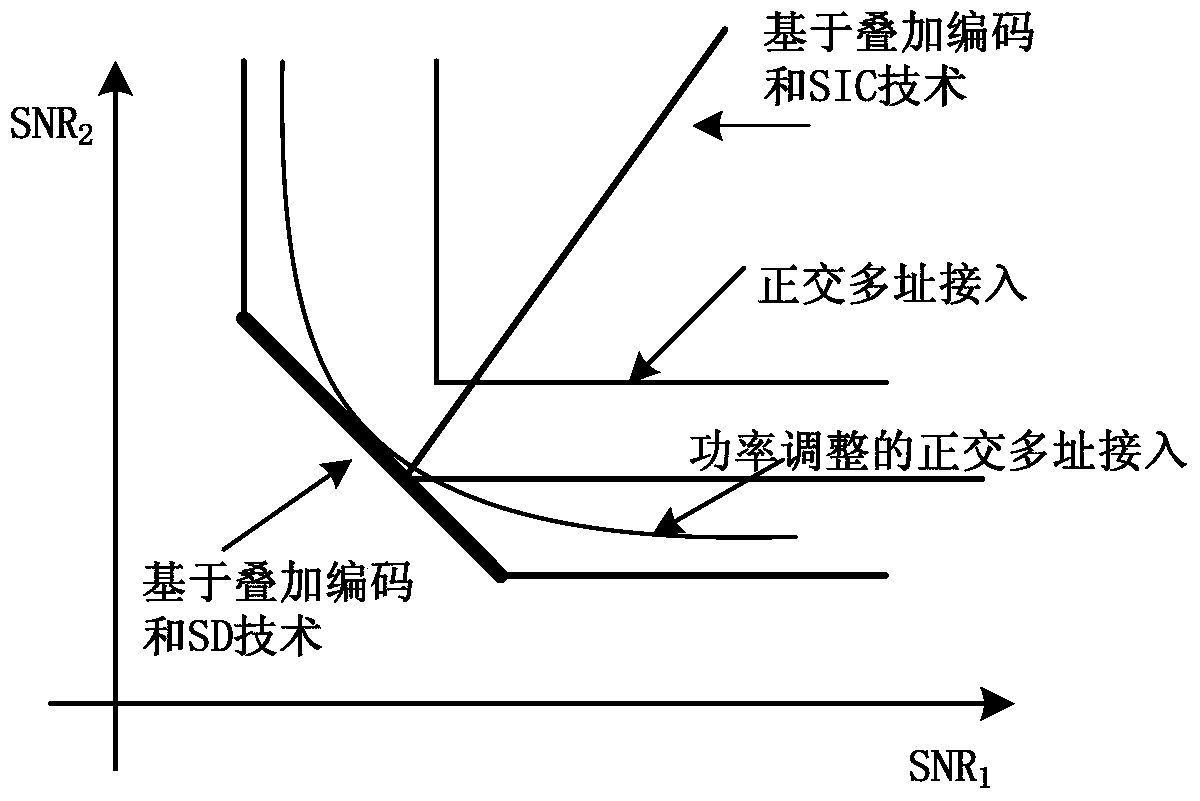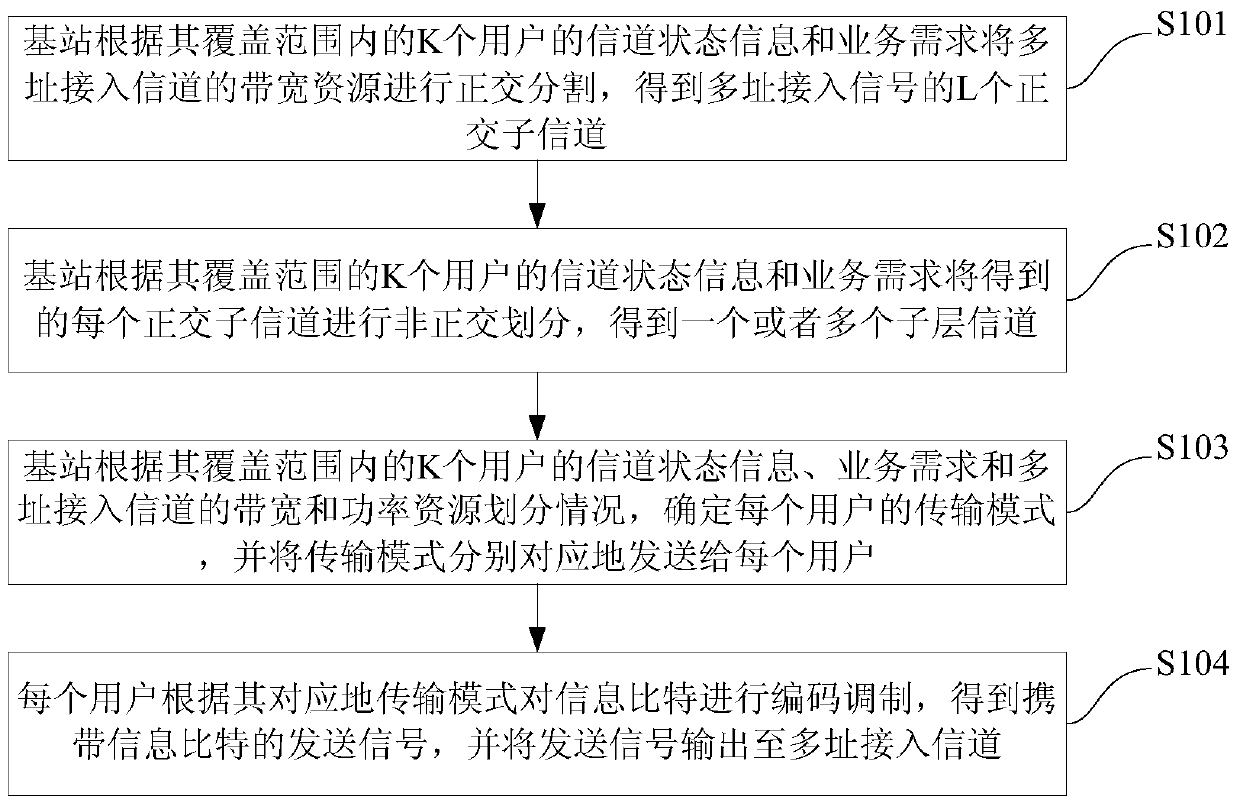Uplink multiple access method based on joint orthogonal multiple access and non-orthogonal multiple access
A technology of non-orthogonal multiple access and access method, which is applied in the field of multiple access of digital information transmission, and can solve the problems of low overall system transmission rate and unsuitable IDMA for asymmetric channels.
- Summary
- Abstract
- Description
- Claims
- Application Information
AI Technical Summary
Problems solved by technology
Method used
Image
Examples
Embodiment 1
[0081] In this embodiment, taking K=27 as an example, the multiple access method of the present invention is further described in detail. The specific process is as follows Figure 4 As shown, it specifically includes the following steps:
[0082] Step 1: The base station orthogonally divides the bandwidth resources of the multiple access channel according to the channel state information and service requirements of the 27 users within the coverage area, and obtains three orthogonal sub-channels of the multiple access channel.
[0083] Wherein, the user service requirement includes but not limited to the user transmission rate. The channel state information includes user transmit power, channel gain, and receiver noise, or channel gain and user signal-to-noise ratio at the receiver. More specifically, the bandwidth resource of each orthogonal subchannel is a part or all of the time domain, frequency domain, air domain or code domain resources of the entire multiple access cha...
Embodiment 2
[0103] This embodiment takes K=9 (that is, 9 users) as an example to further describe the multiple access method of the present invention in detail. This embodiment is similar to Embodiment 1, and its difference only lies in the following content:
[0104] 1. The number of users in the multiple access channel is K=9.
[0105] 2. Divide the bandwidth resource of the multiple access channel to obtain only one orthogonal sub-channel.
[0106] 3. Divide the power resource of the multiple access channel to obtain 3 sub-layer channels, the 3 sub-layer channels have different priorities, and each sub-layer channel is shared by 3 users.
[0107] 4. Each user only accesses one sub-layer channel of one orthogonal sub-channel.
[0108] 5. The resource occupancy of the equivalent multiple access channel is as follows: Figure 7 shown.
Embodiment 3
[0110] In this embodiment, 9 users are taken as an example to further specifically describe the multiple access method of the present invention. This embodiment is similar to Embodiment 1, and its difference only lies in the following content:
[0111] 1. The number of users in the multiple access channel is K=9.
[0112] 2. Divide the bandwidth resource of the multiple access channel to obtain three orthogonal sub-channels.
[0113] 3. Perform non-orthogonal segmentation on each orthogonal sub-channel to obtain 3 sub-layer channels, the 3 sub-layer channels have different priorities, and each sub-layer channel is only accessed by 1 user.
[0114] 4. Each user only accesses one sub-layer channel of one orthogonal sub-channel.
[0115] 5. The resource occupancy of the equivalent multiple access channel is as follows: Figure 8 shown.
PUM
 Login to View More
Login to View More Abstract
Description
Claims
Application Information
 Login to View More
Login to View More - R&D
- Intellectual Property
- Life Sciences
- Materials
- Tech Scout
- Unparalleled Data Quality
- Higher Quality Content
- 60% Fewer Hallucinations
Browse by: Latest US Patents, China's latest patents, Technical Efficacy Thesaurus, Application Domain, Technology Topic, Popular Technical Reports.
© 2025 PatSnap. All rights reserved.Legal|Privacy policy|Modern Slavery Act Transparency Statement|Sitemap|About US| Contact US: help@patsnap.com



